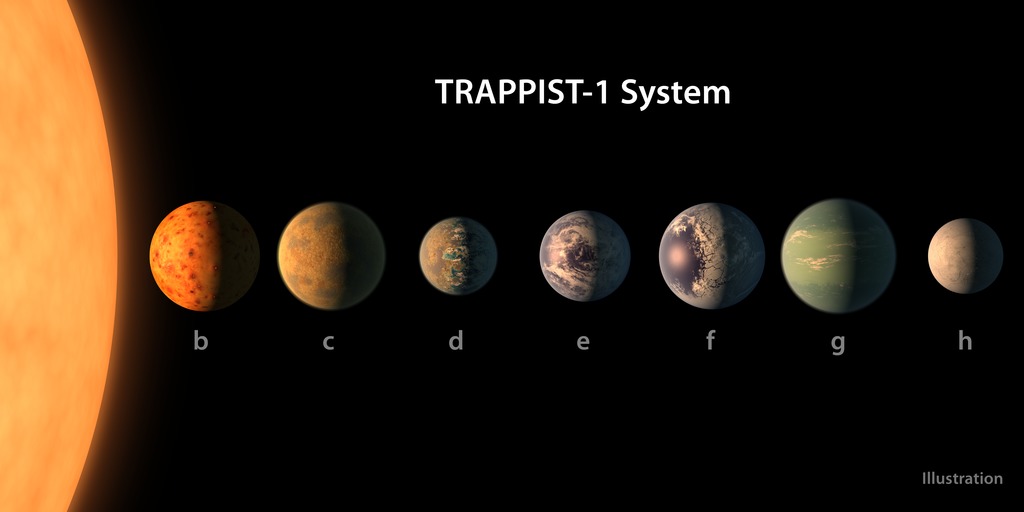TRAPPIST-1 Exoplanets Statistics

TRAPPIST-1 Exoplanets Statistics
This chart shows, on the top row, artist concepts of the seven planets of TRAPPIST-1 with their orbital periods, distances from their star, radii and masses as compared to those of Earth. On the bottom row, the same numbers are displayed for the bodies of our inner solar system: Mercury, Venus, Earth and Mars. The TRAPPIST-1 planets orbit their star extremely closely, with periods ranging from 1.5 to only about 20 days. This is much shorter than the period of Mercury, which orbits our sun in about 88 days.
The artist concepts show what the TRAPPIST-1 planetary system may look like, based on available data about their diameters, masses and distances from the host star. The system has been revealed through observations from NASA's Spitzer Space Telescope and the ground-based TRAPPIST (TRAnsiting Planets and PlanetesImals Small Telescope) telescope, as well as other ground-based observatories. The system was named for the TRAPPIST telescope.
The seven planets of TRAPPIST-1 are all Earth-sized and terrestrial, according to research published in 2017 in the journal Nature. TRAPPIST-1 is an ultra-cool dwarf star in the constellation Aquarius, and its planets orbit very close to it.
For More Information
Credits
Please give credit for this item to:
NASA/JPL-Caltech/R. Hurt, T. Pyle (IPAC)
-
Animator
- Amy Moran (Global Science and Technology, Inc.)
Release date
This page was originally published on Wednesday, March 22, 2017.
This page was last updated on Thursday, October 10, 2024 at 12:27 AM EDT.




